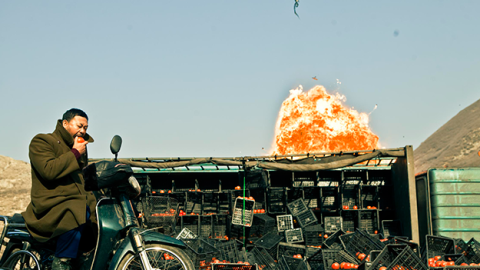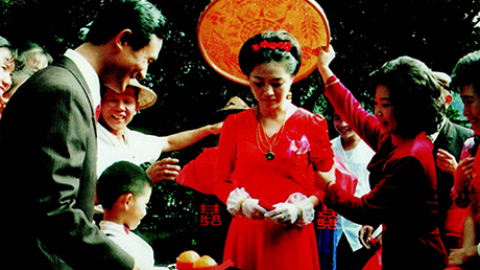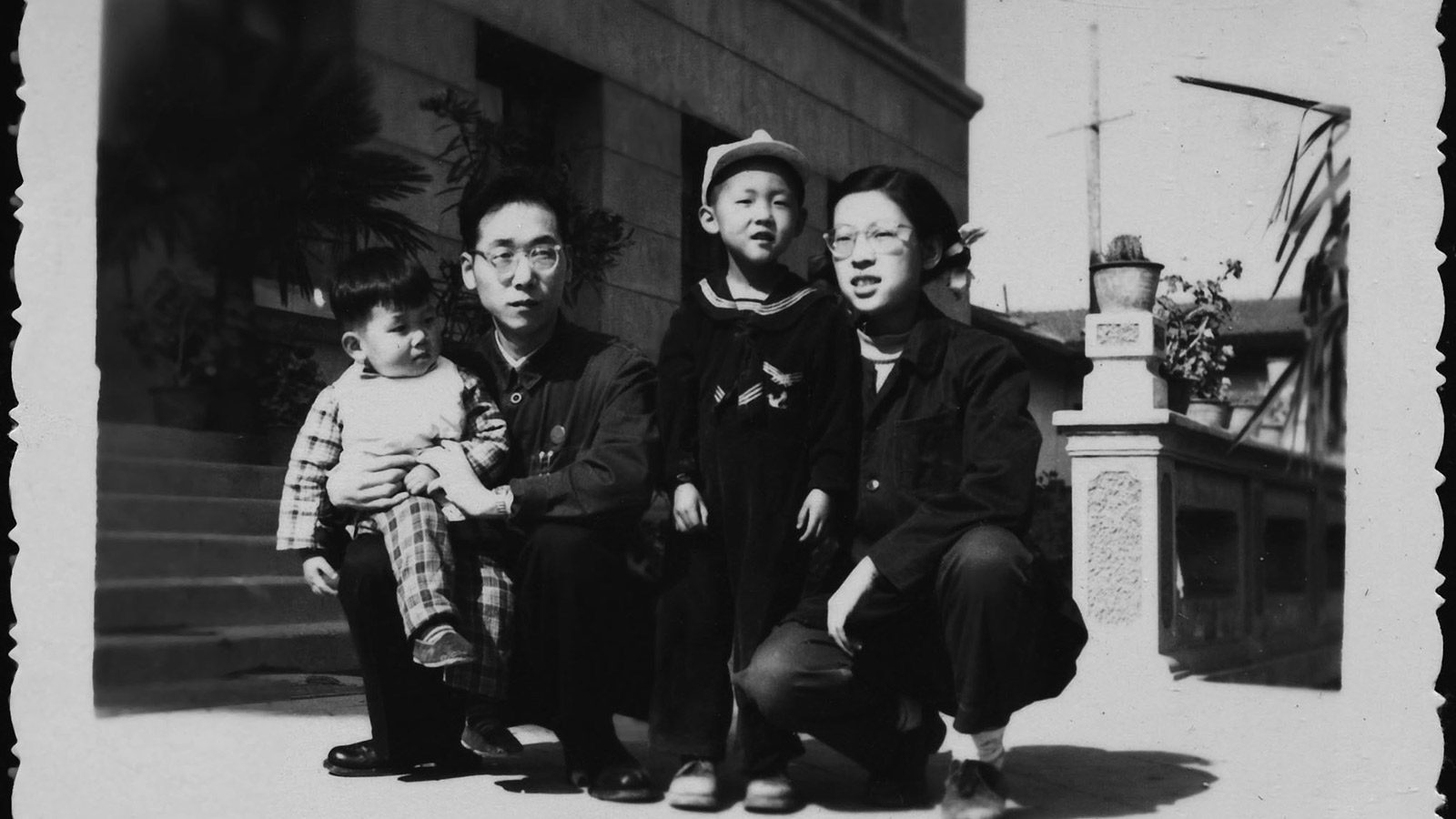
The Weight of the World
How do you look the world dead in the eye? In the films of Chinese documentarian Wang Bing, time expands to such leviathan extremes—in the case of his video installation Crude Oil (08), a total of 14 hours—they make you feel as though you’ve been forced into a staring contest with reality. Even at their most static, his images vibrate with a corrosive, pent-up energy, intensified by the sense that much of the marginal, rural, and post-industrial life they capture is in the process of vanishing. Our looking becomes a kind of waiting, a Beckett-like suspension. After failing to realize his dreams of breaking into the film industry, Wang stumbled into the documentary field without the formal training that had characterized his country’s previous generation of nonfiction filmmakers, even the most experimental and antiestablishment of whom had come up through the ranks of state-sanctioned TV journalism. It’s this outsider status that gives Wang’s works the feeling of having been foraged, and of having no concerns whatsoever for the audience’s comfort. We emerge from his films having been flooded by the present tense, still unsure of how we might have best navigated its waters.

When Wang arrived on the international festival circuit in 2002 with Tie Xi Qu: West of the Tracks, a nine-hour portrait of three declining state-owned factories in northeast China, his voracious documentation felt like the ideal redress to the scarcity of art cinema grappling with China’s modern-day predicament. Here was a director intent on swallowing reality whole, whose tireless focus on life on the lowest rungs of the social ladder counteracted both the melodramatic excesses of Fifth Generation auteurs like Zhang Yimou and the propagandism of most Chinese nonfiction filmmaking up to that point. That the intimidating length of West of the Tracks seemed commensurate with the nation’s unwieldiness as a subject obscured the obvious question of why any viewer would sign on to be held captive by such a mercilessly prolonged vision of industrial decay. In the context of the past decade of China’s New Documentary Movement—an amorphous renaissance that, enabled by the widening availability of cheap digital cameras, has produced such masterful (and comparatively compact) protest films as Zhao Liang’s Petition, Huang Weikai’s Disorder, and Du Haibin’s 1428 (all from 2009)—Wang’s preeminence has become much easier to scrutinize.
And still no one has dared to make movies quite like his. Central to the experience of a Wang Bing film is the sense that one is being tested, but with Wang it’s not simply a matter of time commitment or mental stamina. Just as challenging to endure is the degree to which his eye seems inured to and undaunted by the rugged facts of ugliness, which emerge both as a feature of the unforgiving landscapes he favors and as an aesthetic tool with its own ambiguous moral force. True to the tradition of Direct Cinema (whose outsized influence on Chinese nonfiction filmmakers some scholars have traced to a trip Frederick Wiseman made to Asia in the early ’90s), Wang strives for a kind of detached immersion. Yet his engagement with the old miserabilist themes of poverty, war, and disenfranchisement is unique in its tonal flatness, its scrupulous but often maddening lack of inflection. From their candid depictions of socioeconomic degradation to the brittle textures and sallow colors of their handheld DV visuals, his films demand to be recognized not for their bravery or social conscience, but for the queasiness they evoke.
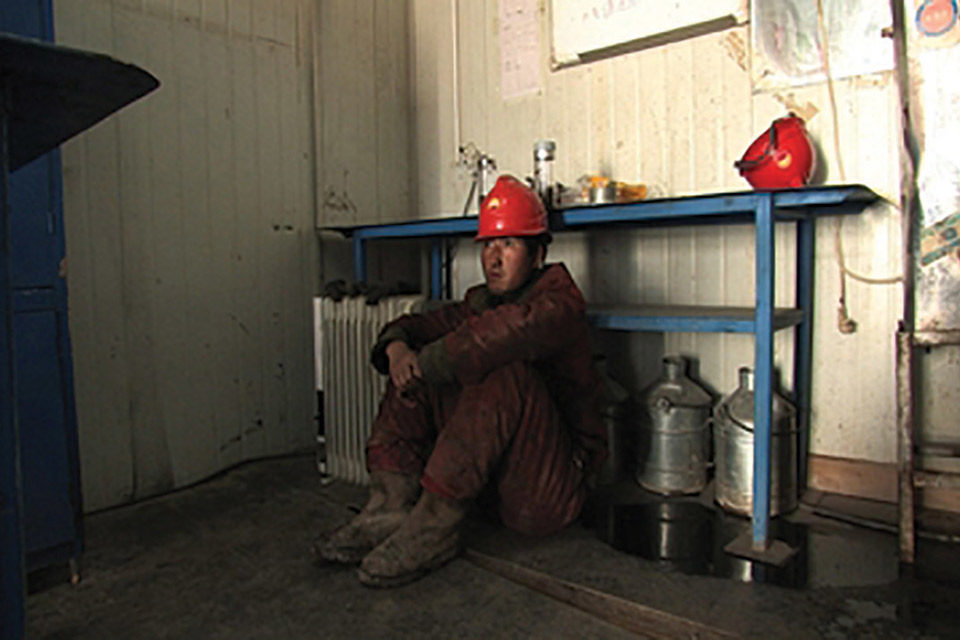
Crude Oil
The hardscrabble existences that Wang chronicles call to mind “other half” art as aesthetically and temperamentally varied as Buñuel’s Land Without Bread, Pedro Costa’s Fontainhas films, and the photography of Lewis Hine and Jacob Riis. Much of his work, though, does not evince subversive rage or run-of-the-mill humanist empathy. In the case of his devastating recent film, ’Til Madness Do Us Part (13), what we feel most viscerally is the pitilessness and ruthlessness of his gaze. Set in a mental institution in a remote part of Yunnan province, where Wang was granted permission to shoot for two and a half months, this four-hour odyssey brings near-microscopic attention to a slow drip of chaos, making each shot land like a new round of punishment. The camera wanders the facility like a lab rat in a maze, darting between claustrophobic bedrooms, a corridor where male inmates sit on benches and look down through metal bars at the courtyard below, and a lounge where they watch soap operas and porn with the same glassy-eyed apathy. The cramped quarters force us into such unrelenting intimacy that we can taste the rust of the bed frames, the peeling paint on the walls, the fetid sheets.
Like its own variant of extreme cinema, Madness burrows beneath the skin, playing on our unease at partaking in a reality that the people on screen would flee if only they could. In occasional interviews, Wang has made clear his wish to capture the banal humanity of his subjects, perhaps to free them from the symbolism and sentimentality that privileged film-festival audiences so easily impose on the oppressed. As for prurient spectacle, while Madness is no Shock Corridor or Snake Pit or even a Titicut Follies, it is not above exploiting the grotesquery of mental illness in severe confinement, a condition that can’t help but resonate with what Foucault described as madness’s long-held metaphorical significance: “a difficult, hermetic, esoteric learning,” “the dizzying unreason of the world.” Wang courts our revulsion, with his grainy DV evoking the shit-smeared quality of a grunge music video. In the dank nocturnal gloom, the images get so blurry that, when a patient starts compulsively swatting at an insect on the wall, it’s hard to tell whether his victim is real or imagined. It’s when Wang insists on us witnessing naked inmates pissing into pails and engaging in vaguely sexual activity that we abandon the presumption that his observational transparency is ethically airtight.
The extended running time gives palpable form to how much Wang has wrested from his subjects, some of whom do not seem to have the wherewithal to have given their consent. Wang’s durational extremes do not just carry with them the weight of history and the inertia of the present; they also suggest that we as viewers might repay the gift of his subjects’ nakedness with our own sustained submission. In accordance with the material at hand, his temporal effects vary: in a film like West of the Tracks, where the inevitable shuttering of factories has grave implications for an entire community’s livelihood, we experience time as something to be staved off, while in Madness, the minutes collect as in a pool of standing water. Time in these films does not embrace, it provokes. It’s felt as sacrifice and labor. And the aim is to make us earn, as if such a thing were possible, the right to lay eyes on humiliations that are at once collectively borne and unbearably private.
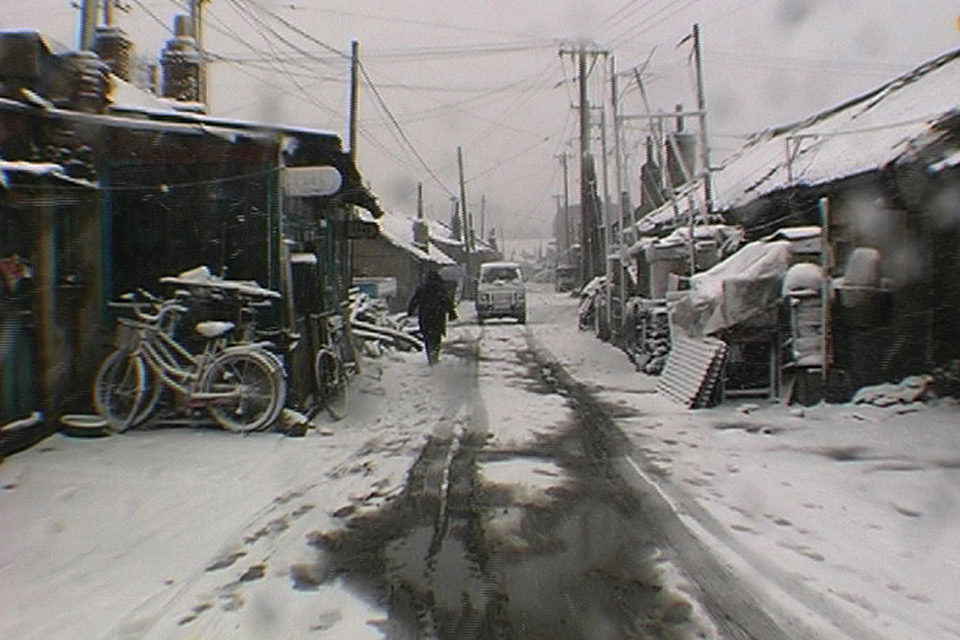
Tie Xi Qu: West of the Tracks
Due in no small part to the children at its center, the exquisite Three Sisters (12)—made shortly before Madness—showcases a more tenderhearted Wang, for whom time is not so much a burden to be shouldered as an offering of silent solidarity. As we watch 10-year-old Yingying, 6-year-old Zhenzhen, and 4-year-old Fenfen make their way, day in and day out, across the mud-caked terrain of their village in Yunnan, sometimes herding farm animals, sometimes gathering potatoes or clumps of dung, we imagine our gaze as a kind of accompaniment, an illusory means of standing-beside. The severity of the sisters’ abandonment becomes clear when we learn that their mother has run away, and that their father is heading for the city to find work. Shifting between the dimly lit interiors of a lice-infested hut and the misty, muddy vistas outside, Wang often trails behind the children, especially the smart and resourceful Yingying, with an almost canine faithfulness. A typical scene begins with him following the sisters intently, then letting them walk off into the distance.
In a rare gesture of open adoration, Wang plants his camera at an upward angle as Yingying sits on the edge of a hill, her figure framed against a startling blue sky. However briefly, she is empress of this inhospitable domain. In Wang’s latest film, Ta’ang (16), a haunting look at Burmese ethnic-minority refugees traveling along the Chinese border, we get a similar but more fearsome kind of portraiture: a young girl stares directly at the camera as unexplained fires blaze behind her, her skin and clothing rendered monochrome in the night. While Wang has expressed a preference for the restless flow of time that film so convincingly simulates, his academic background in photography has clearly taught him the searing power of isolated images. He knows the emotional and moral tensions that can surface when the camera decides to put time on hold. Compare the aforementioned shots with the three-hour entirety of his masterpiece Fengming: A Chinese Memoir (07), which records an elderly woman’s verbal account of the Cultural Revolution from an unvaried, coldly reverential distance, and you’ll recognize a documentarian on whom the thorny complexities of proximity and stillness are not lost, and for whom the ongoing–ness of a single moment can hold its own terrifying allure.
For all the comprehensive scope their epic scales imply, Wang’s films thwart our efforts at mastery. His camera is rooted in its singularity, its inability to occupy two spaces at once. We’ll never see what the father in Three Sisters lives through in the city or what brings him so quickly back, though films that address the miseries of migrant labor, like Jia Zhangke’s The World (04), Wang Chao’s Luxury Car (06), and Lixin Fan’s Last Train Home (09), may have already given us some idea. We’ll never know what made his wife seek an escape from her fate, though we may already recognize familial separation as one of the costs of China’s rage for capitalism. Such narrative elisions are also found in Madness, which relegates the inmates’ backstories to the shadows, and in Ta’ang, which never coherently details the political crisis the refugees are fleeing. Leaving the systemic causes of suffering unexamined allows Wang to claim political objectivity, and the absence of obvious dramas and climaxes makes it difficult to accuse him of fostering facile emotional identification.
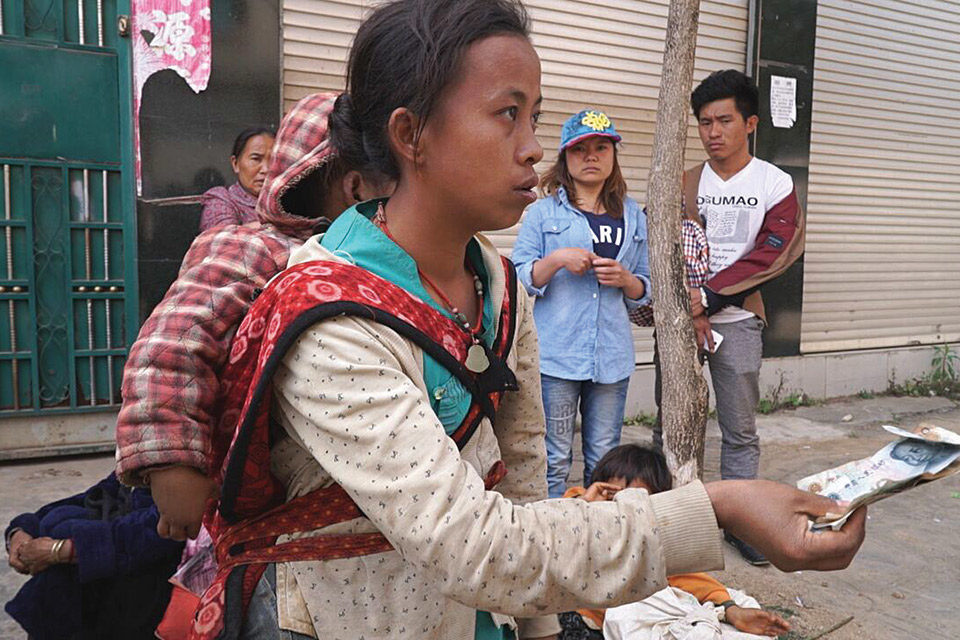
Ta’ang
The conclusions we’re left to draw can be disturbing. Even in that affectionate shot of Yingying on the hill, Wang is exposing the human figure in its bare physicality, as an object. Its beauty exists alongside its endless capacity to be brutalized, reduced to an anonymous object on the horizon. Though it may not be fashionable in an age when more and more nonfiction filmmakers are touting the agency and equal participation of their subjects, the power of Wang’s cinema hinges on the paralyzing limits of perception, on our ultimate failure to comprehend the sight of a traumatized Other. In Ta’ang, which confronts a kind of social otherness that has long gone unexplored in Wang’s work, and one that challenges myths of an ethnically homogeneous China isolated from the rest of the world, our eyes scan a barren field populated by flimsy tents and so many fragile, itinerant lives. The mind recoils at an empathy that can only fumble toward its target: while Wang intermittently zooms in on clusters of families, women carrying babies and speaking into cell phones, and children amusing themselves amid the desolation, he prefers to fill the screen with unidentifiable human figures, whose fears and desires and personalities will never come into focus.
This tacit admission of failure offers a necessary rebuke of social documentary’s tendency to disguise pity as compassion, to fetishize mere looking as virtue. And while this strategy can sometimes feel like fatalistic indifference, it also fuels the sense of longing that occasionally breaks through the numbness Wang’s films induce. In Madness, the camera’s desire to reach beyond its limited purview is palpable: you can feel it in the way it gazes at Chinese New Year fireworks from behind bars, or peers across the courtyard to some shadowy action in a window. And you feel it when, in one of the film’s more lucid depictions of interpersonal connection, an inmate’s visit with his wife and son dissolves into a bout of domestic bickering that’s downright comforting in its familiarity. She’s downloaded a cheerful pop song for him; he repeatedly grunts at her to turn it off as she teases him for his surliness. Here is the tragicomedy of two family members groping for each other across their estrangement, reaching out and pulling back with the repetitiveness of ritual. Love hasn’t spared anyone their helplessness, but its brief cameo in this godforsaken landscape is a reminder that this, too, is life.
IN FOCUS: Three Sisters and ’Til Madness Do Us Part will be available on home video this fall.
Andrew Chan has been contributing to FILM COMMENT since 2008.



